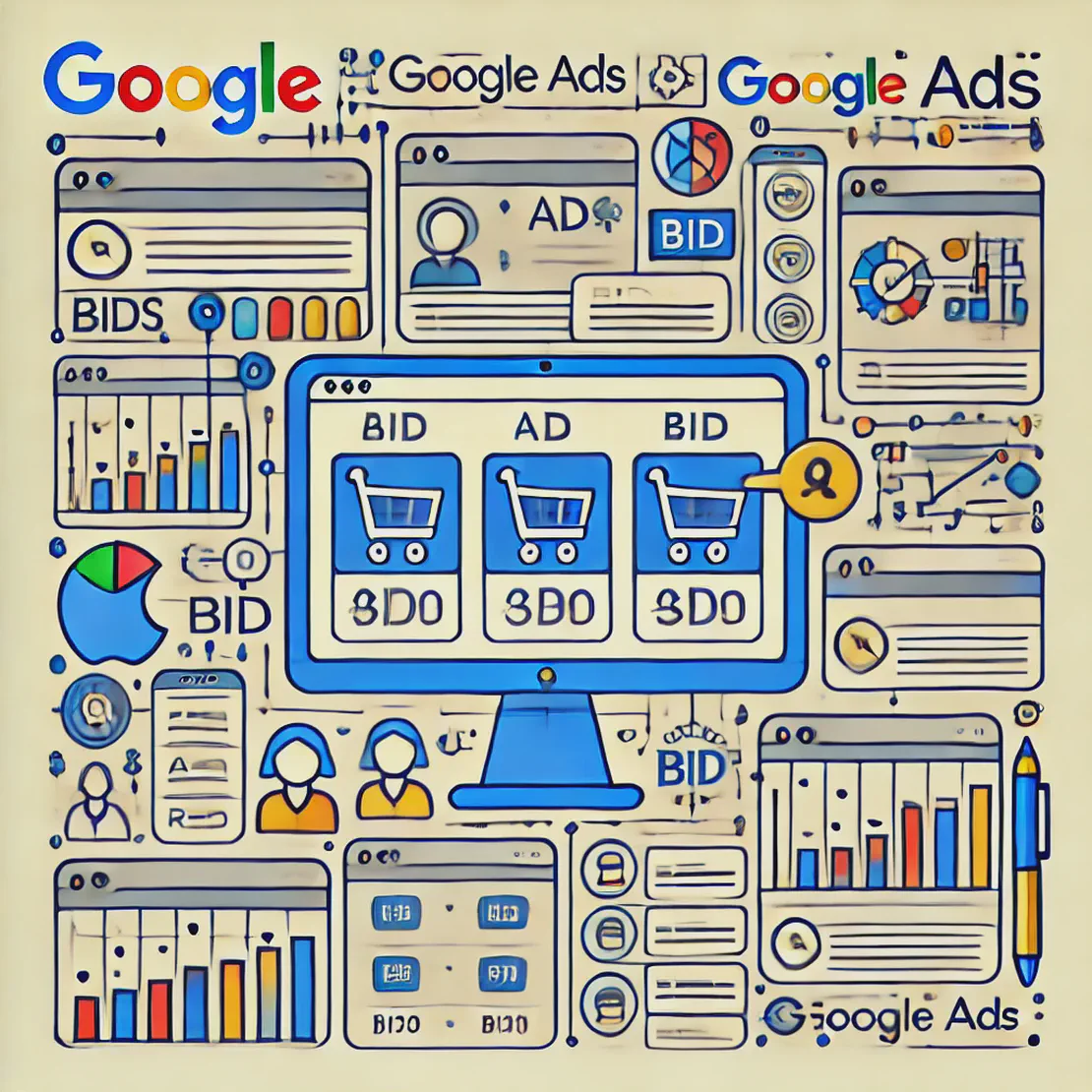Get to Know the Google Ads Auction
- Daniel
- Google ads , Ppc
- July 1, 2024

Understanding the Google Ads Auction: A Guide for Advertisers
You’ve crafted your text ad, set your budget, and now you’re eager to see it live on Google Search.
But how can you ensure your ad will be displayed? And what position will it occupy on the results page?
This is where the Google Ads auction comes into play.
How the Google Ads Auction Works
Google Ads uses an auction system to rank ads on the search results page and determine the cost per click (CPC).
This process is driven by Ad Rank, a key calculation that decides the order in which ads appear.
Why the Auction System?
Google aims to provide a positive experience for users and value for advertisers.
Users want relevant ads that closely match their searches, while advertisers seek to display ads that users will click on.
This balance is achieved through a unique auction system that considers more than just the bids.
Example of a Real-Time Auction:
In a second-price auction, the highest bidder doesn’t pay their full bid. Instead, they pay slightly more than the second-highest bid.
For instance, if four advertisers bid £4, £3, £2, and £1 respectively, the highest bidder would only pay £3.01.
This system encourages advertisers to bid their true maximum willingness to pay.
Determining Your Ad Position: Ad Rank
Ad Rank is calculated for every ad in the auction and determines both the position of your ad and its eligibility to be shown.
Generally, the ad with the highest Ad Rank appears in the top position, followed by the second highest, and so on.
Five Factors of Ad Rank:
- Bid: The maximum amount an advertiser is willing to pay per click.
- Ad Rank Threshold: Minimum thresholds that an ad must achieve to be shown.
- Context of Query: The relevance of the ad to the user’s search query.
- Ad Extensions Impact: The performance of additional information like call buttons or sitelinks.
- Auction-Time Ad Quality: The overall quality score of the ad at the time of the auction.
Three Main Factors Influencing Ad Quality
Google’s goal is to show more useful ads in higher positions, which isn’t solely based on bids.
Here are the three main factors that determine ad quality:
-
Expected Click-Through Rate (CTR): Google’s prediction of how often an ad will be clicked on when shown. High CTR indicates that users find the ad relevant.
-
Ad Landing Page Experience: Users prefer landing pages that are highly relevant and provide valuable content. A good landing page should be user-friendly, transparent about business operations, and protect user information.
-
Ad Relevance: Measures how well an ad matches the user’s search intent, ensuring that only useful ads are shown and preventing irrelevant ads from appearing.
Note: During real-time auctions, additional factors such as the user’s device, location, and time of day are also considered to evaluate ad quality.
How Ad Rank Affects Cost Per Click
Your average CPC is not a fixed price for each click but varies depending on several factors, including the context of each query.
High-quality ads generally lead to lower costs and better ad positions. When users see relevant and engaging ads, they are more likely to click on them, leading to greater advertising success.
By understanding how the Google Ads auction works and focusing on ad quality, advertisers can optimise their campaigns to achieve better visibility and cost-efficiency on Google Search.



